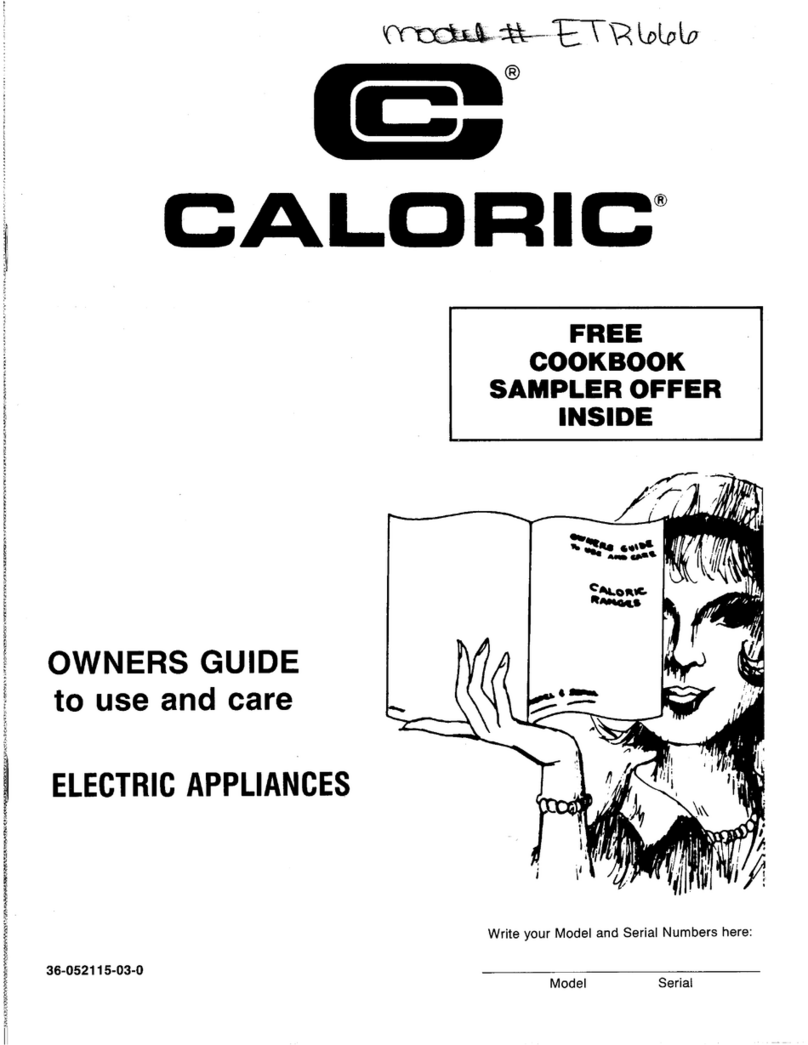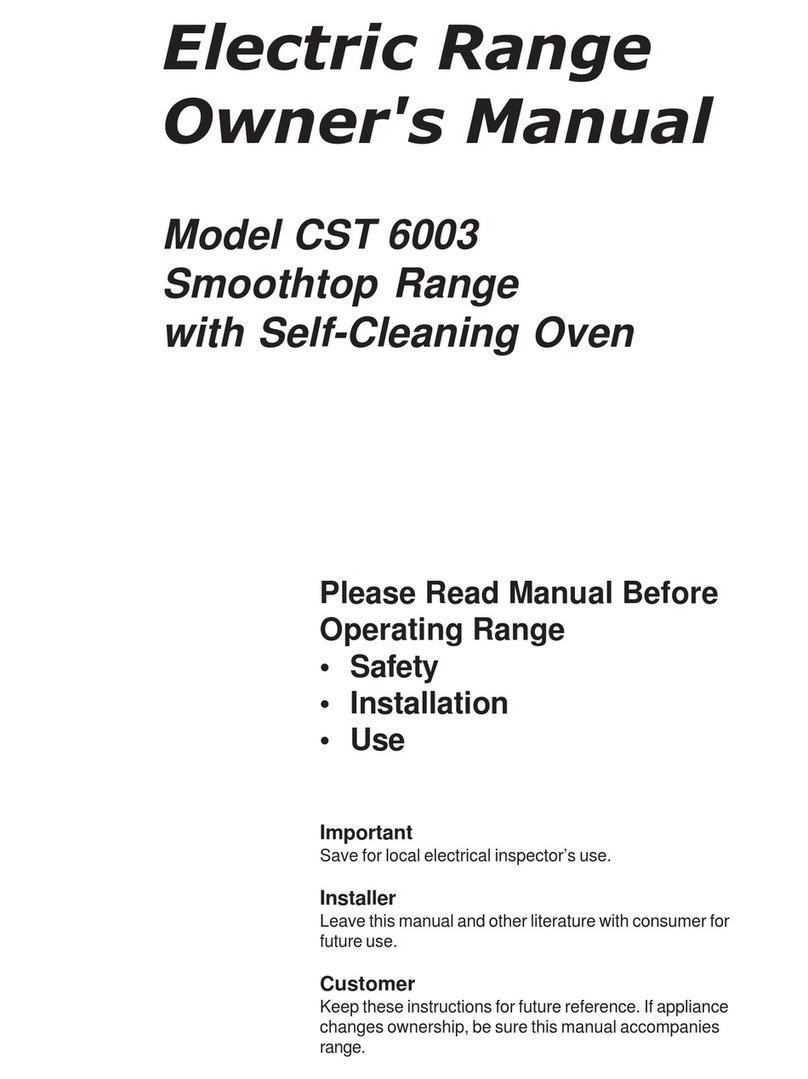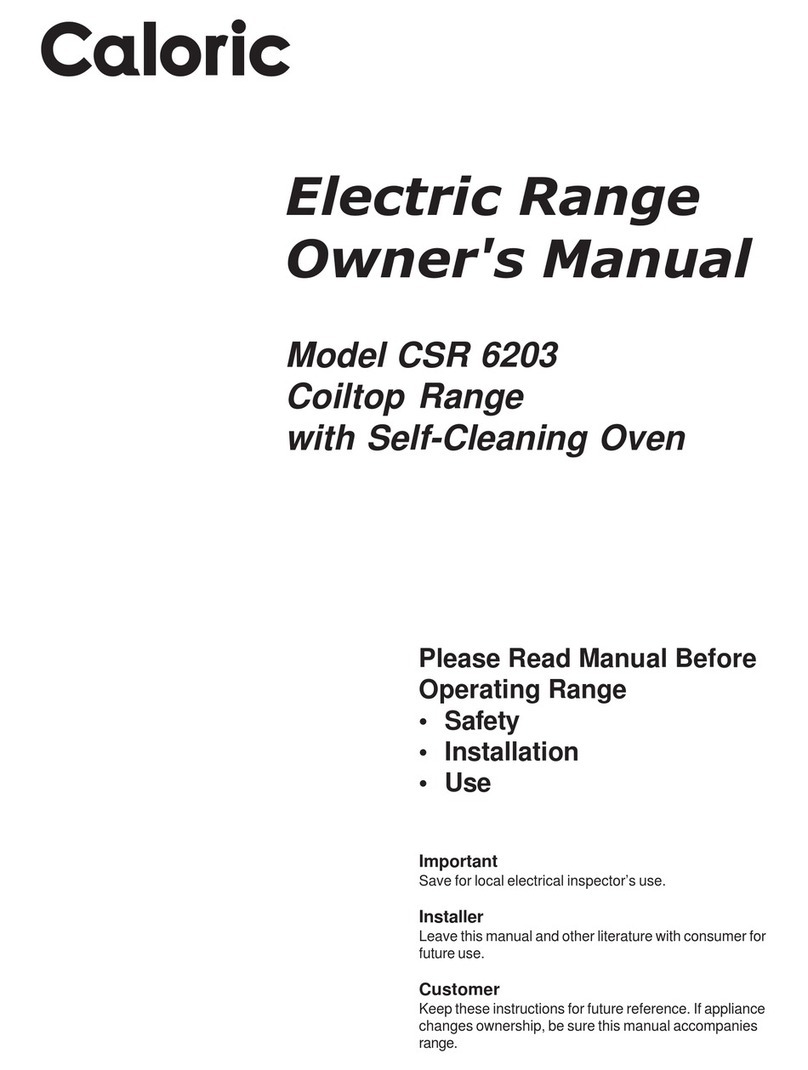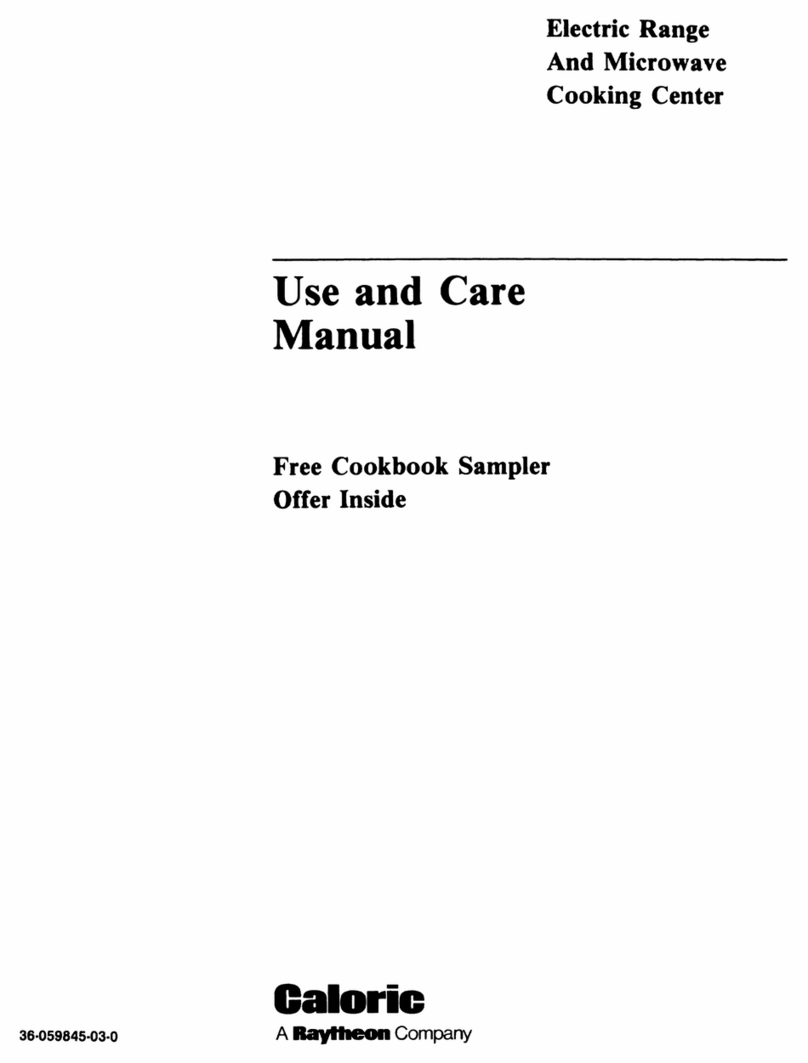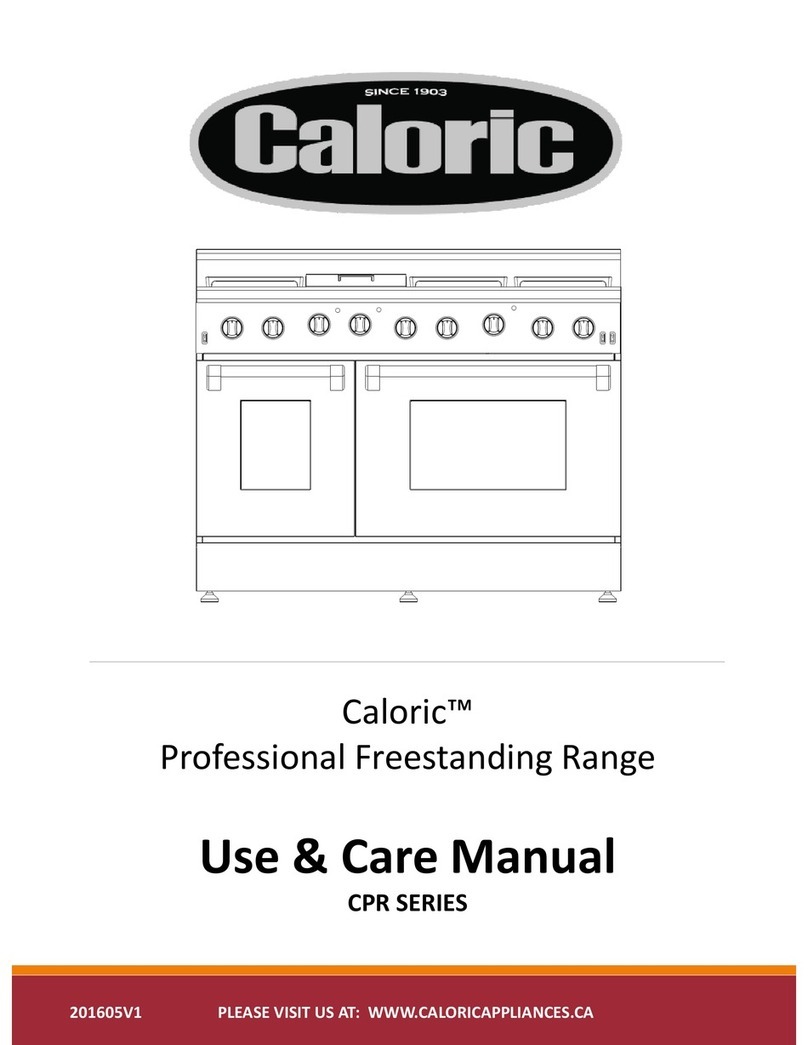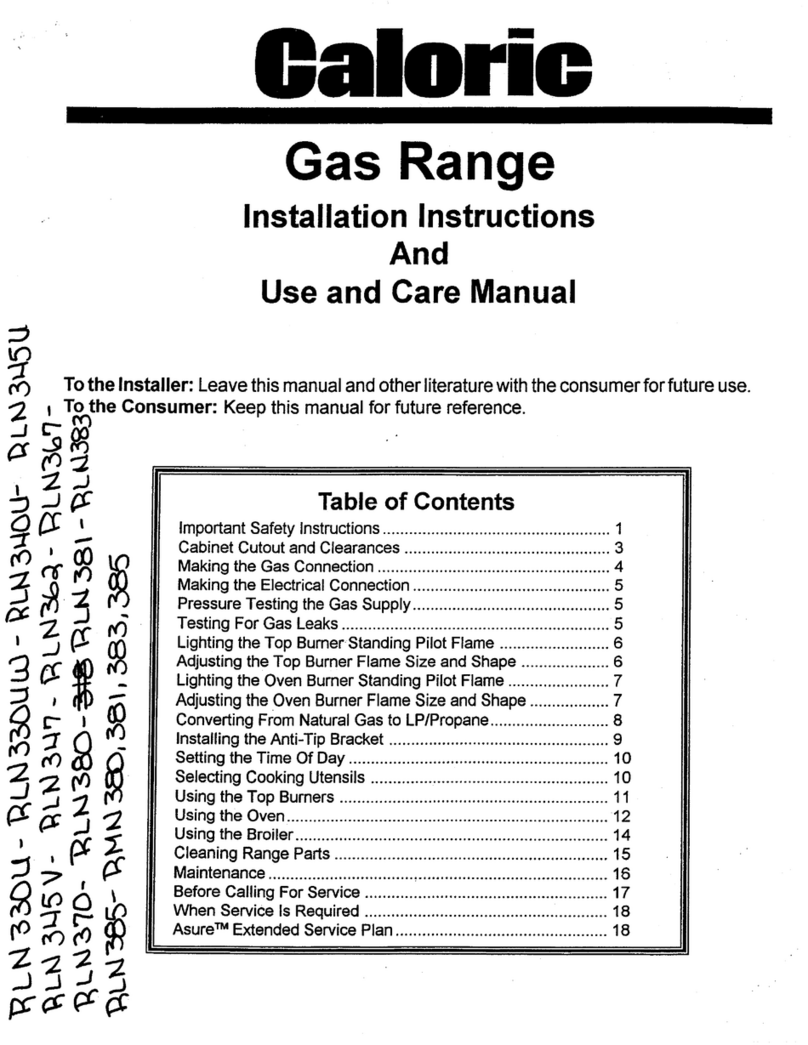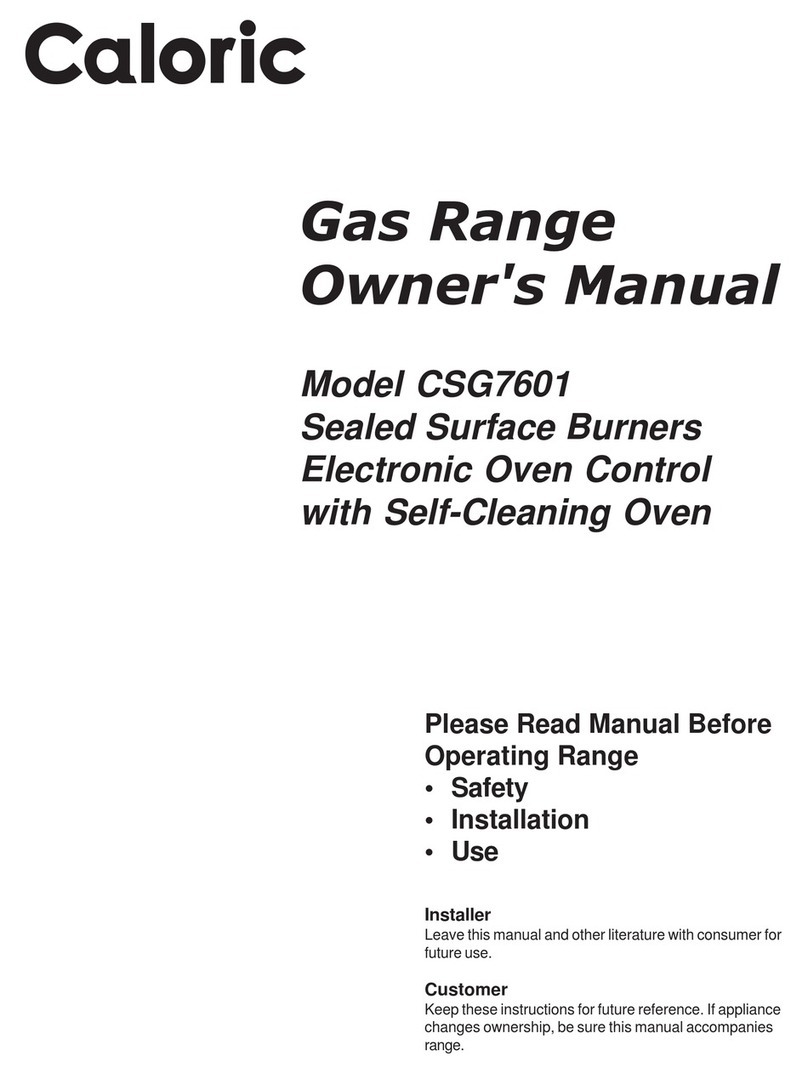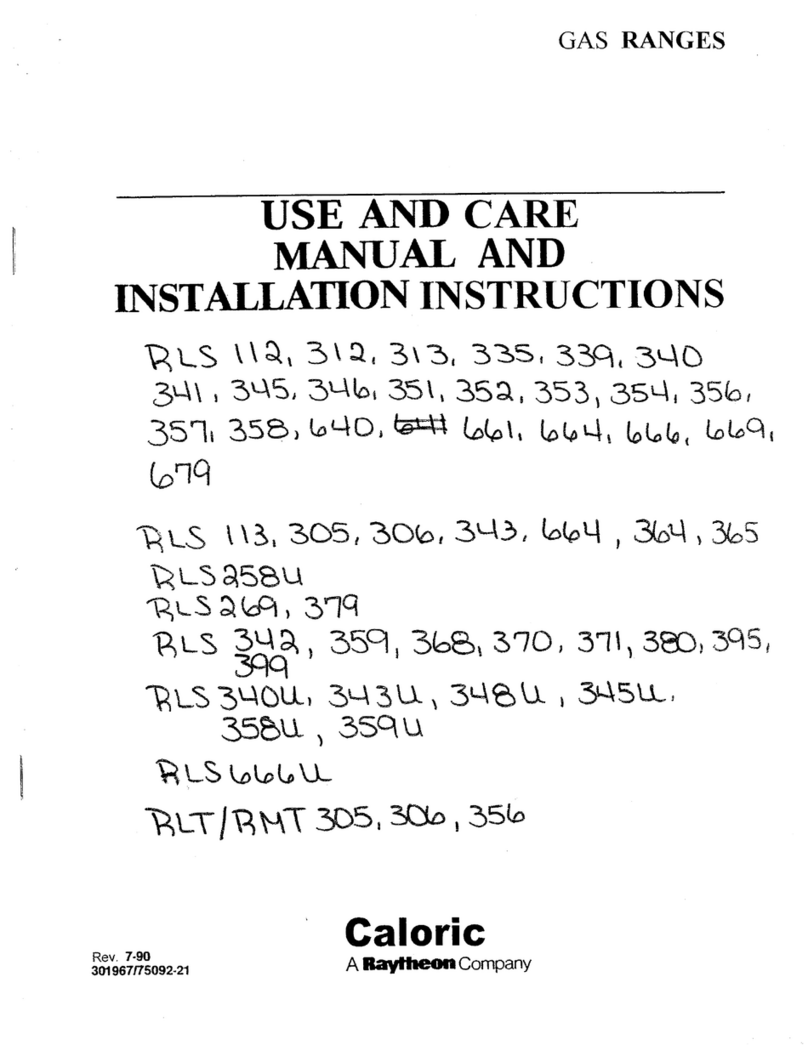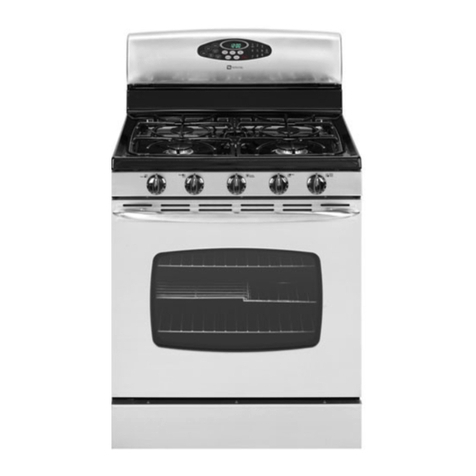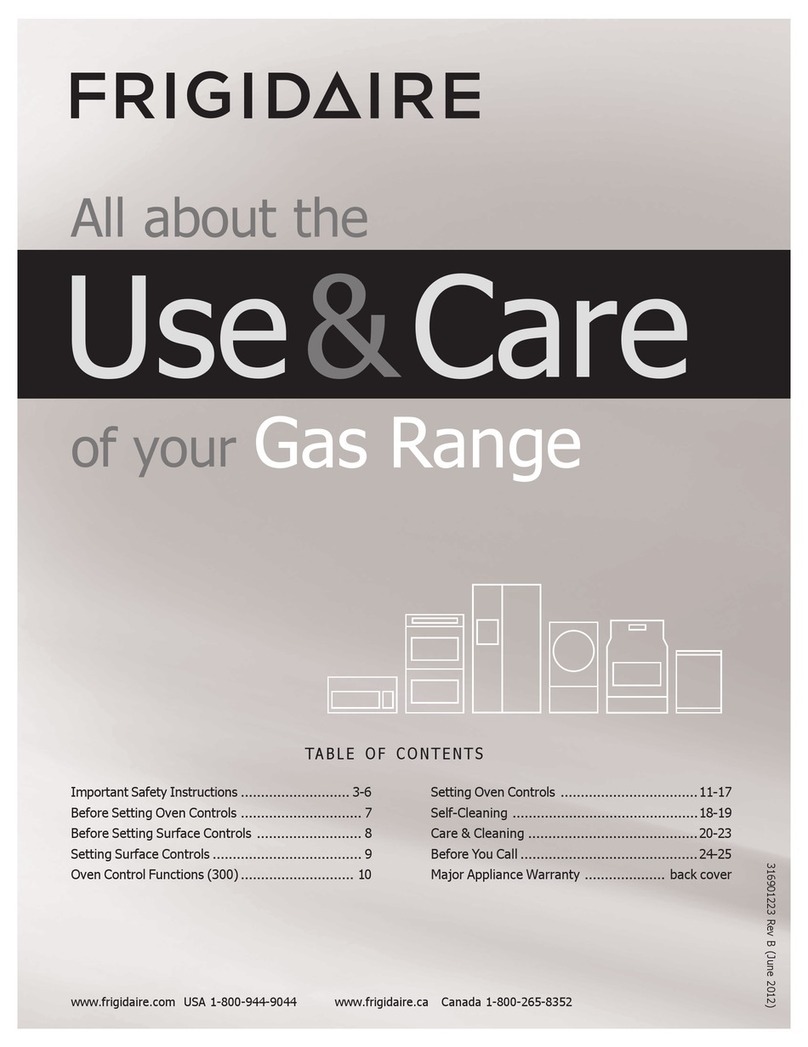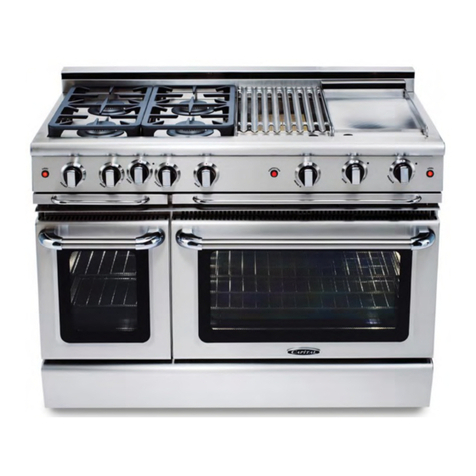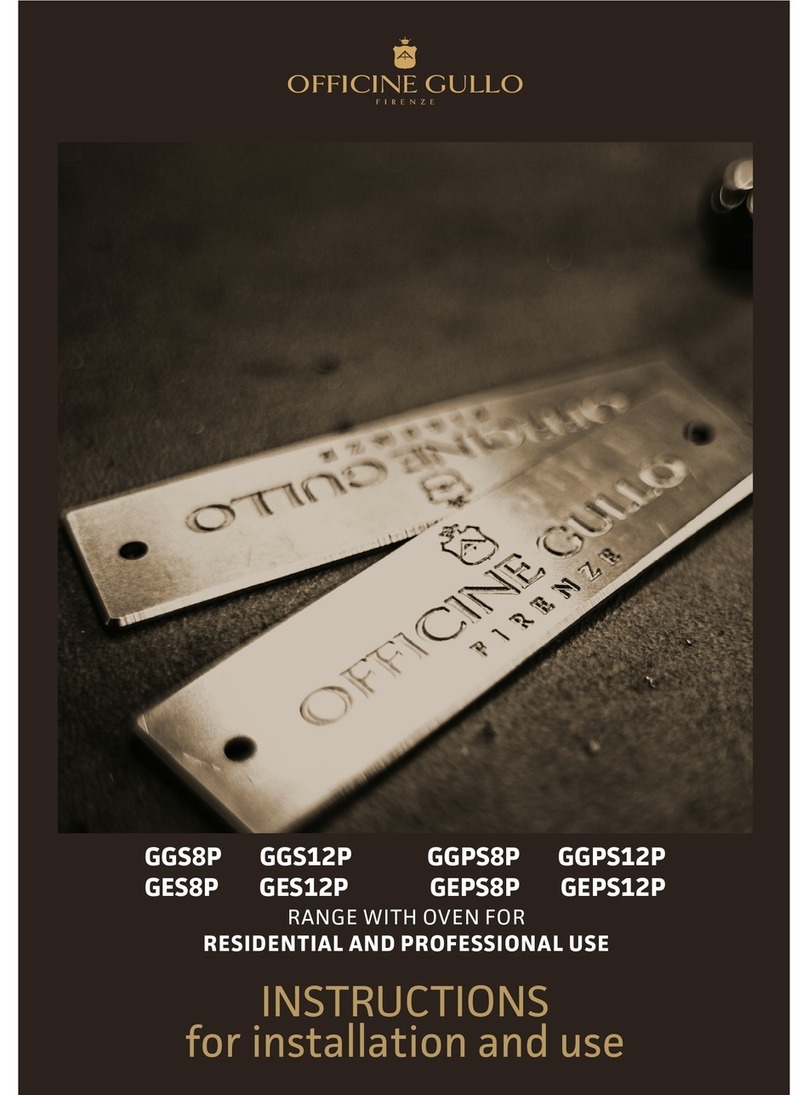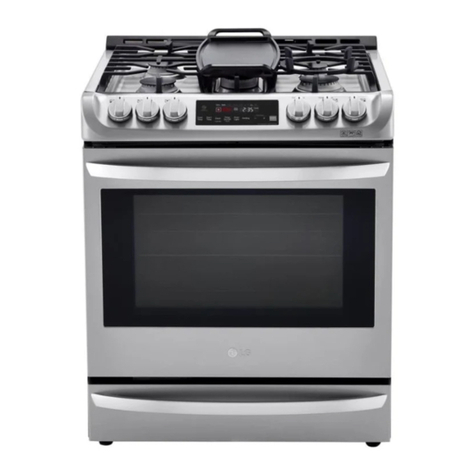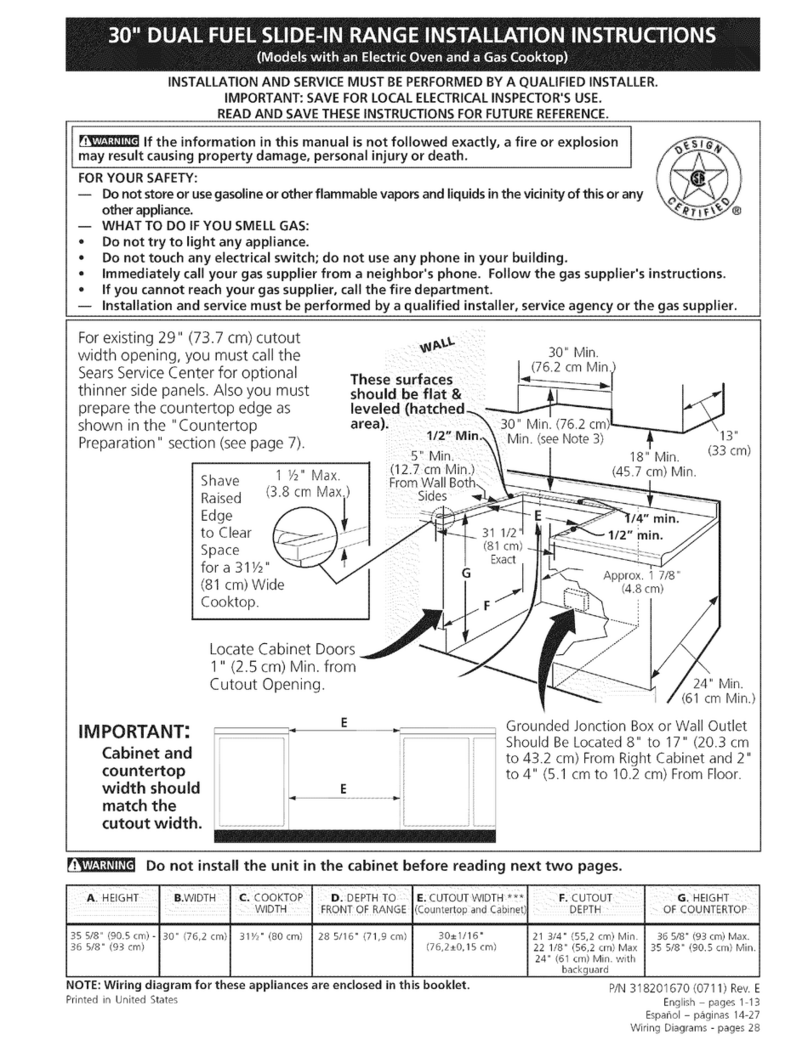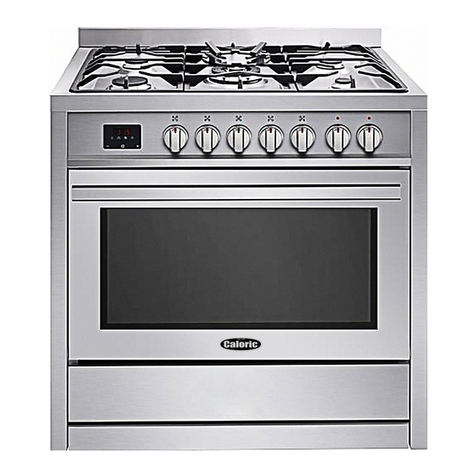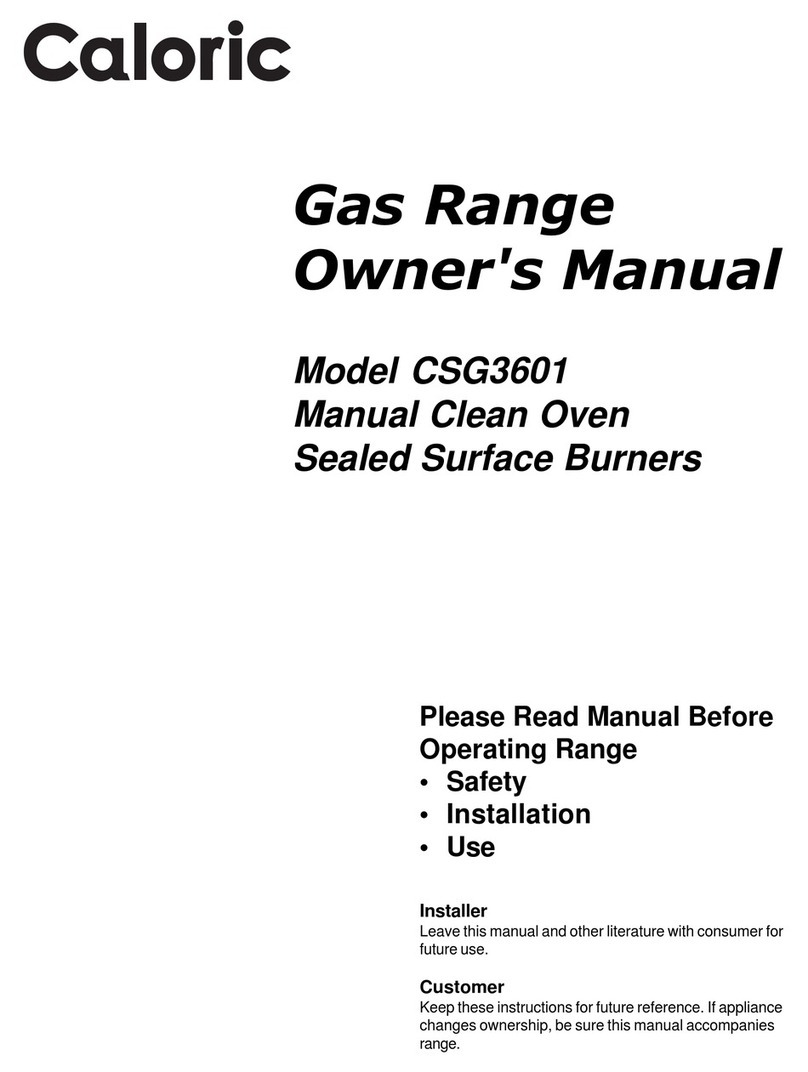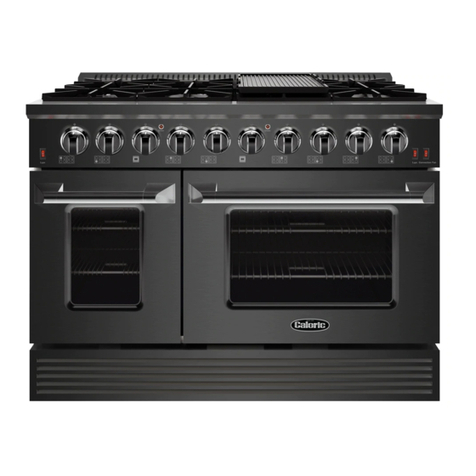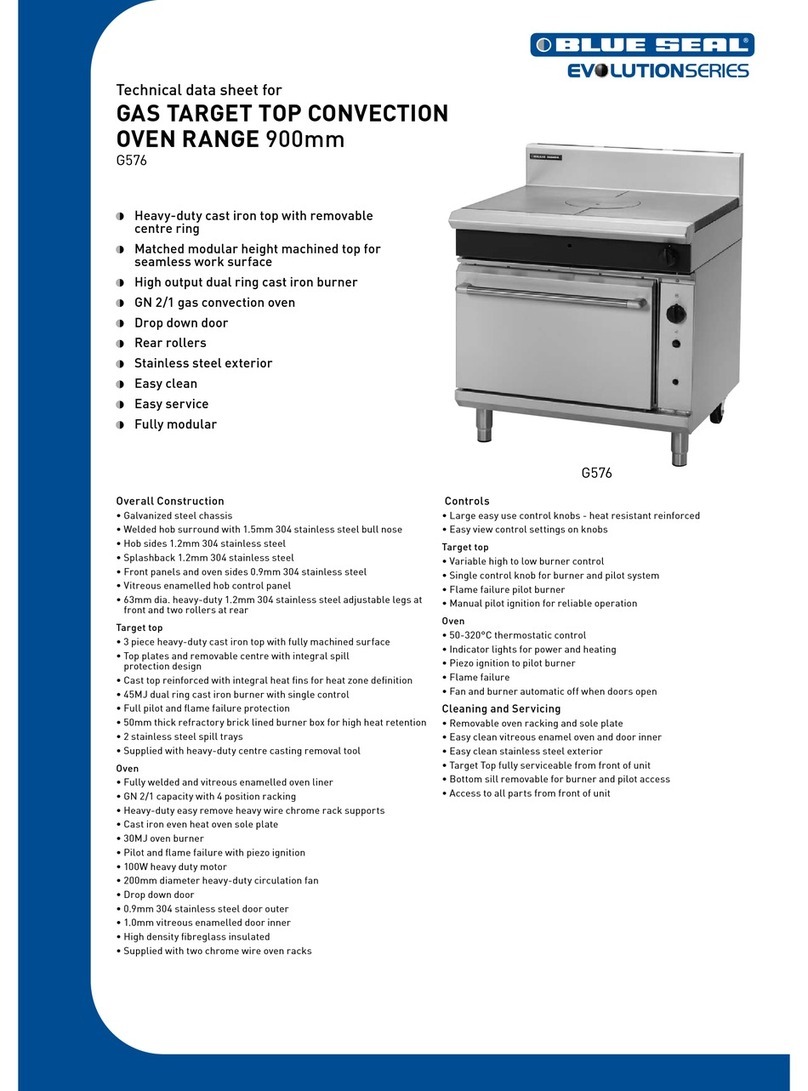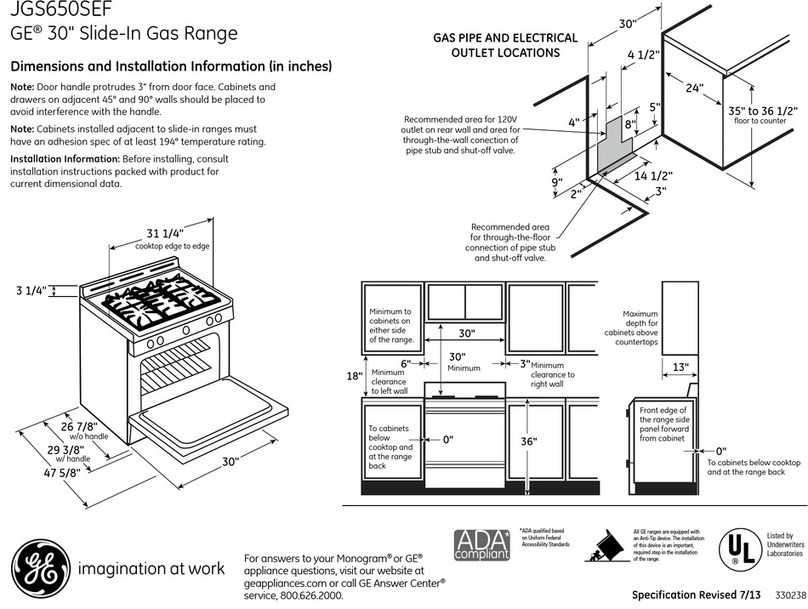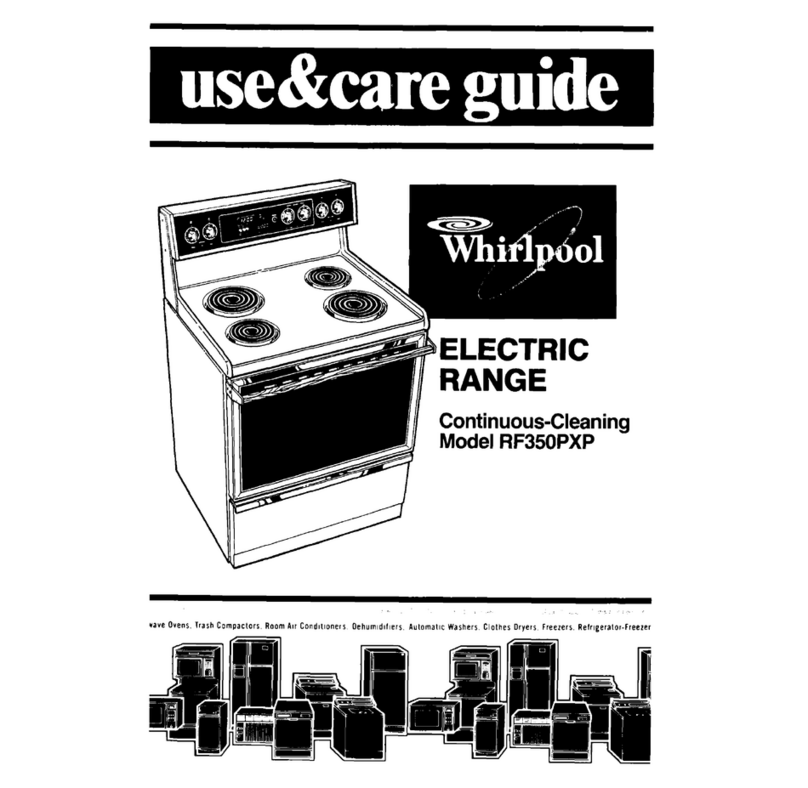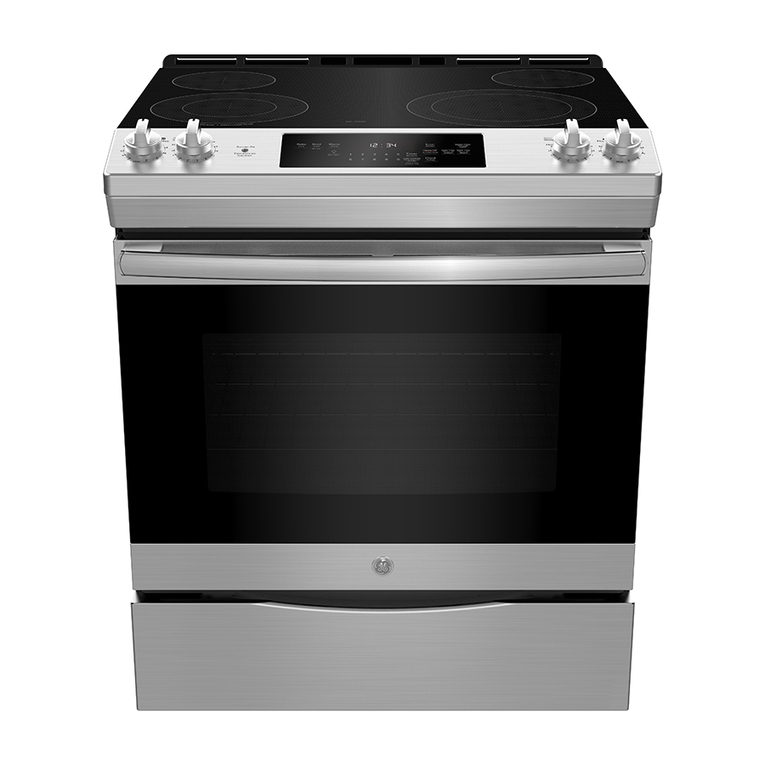
2
Contents Model Identification
Completeenclosed registration card andpromptly return.
If registration card is missing, call Consumer Affairs
Departmentat1-800-843-0304 inside U.S.A.
319-622-5511outside U.S.A. When contacting Caloric
Sales Co. L.P., provide productinformationlocated on
rating plate. Rating plate is located on the oven frame.
Recordthefollowing:
ModelNumber: ______________________________
ManufacturingNumber: ________________________
Serialor S/N Number: _________________________
Dateofpurchase: ____________________________
Dealer’sname and address: ____________________
__________________________________________
__________________________________________
ImportantSafetyInformation........................................ 3
Installation................................................................... 6
ConvertingforUse with LP/Propane ............................ 9
ConvertingforUsewithNatural Gas .......................... 11
OperatingSurfaceBurners ........................................ 16
UtensilRecommendations ........................................ 17
DisplayandFeatures ................................................ 18
ServiceCodesand Tones .......................................... 18
Setting Clock and Timer ............................................ 19
AdjustingFactorySet Baking Temperature................ 19
Baking & Broiling ...................................................... 20
Self-Clean ................................................................. 22
UserMaintenance ..................................................... 23
CookingGuidelines ................................................... 24
Cleaning.................................................................... 26
BeforeCallingfor Service........................................... 27
Warranty ................................................................... 28
Recognize Safety Symbols, Words,
Labels DANGER
DANGER—ImmediatehazardswhichWILL result in
severepersonalinjuryordeath.
WARNING
WARNING—Hazards or unsafe practices whichCOULD
resultinseverepersonalinjury or death.
CAUTION
CAUTION—Hazardsor unsafe practiceswhich COULD
resultin minor personal injury or productor
propertydamage.
What You Need to Know about Safety
Instructions
Warning and Important Safety Instructions appearing in this
manual are not meant to cover all possible conditions and
situations that may occur. Common sense, caution, and care
must be exercised when installing, maintaining, or operating
range.
Always contact your dealer, distributor, service agent, or
manufacturer about problems or conditions you do not
understand.
Parts and Accessories
Purchasereplacement parts and additionalaccessories
(e.g.,oven racks, cooktop modules)over the phone. To
order accessories for your Caloric Sales Co. L.P.
product,call 1-800-843-0304 inside U.S.A.or
319-622-5511outsideU.S.A.
Service
Keep a copy of sales receipt for future reference or in
case warranty service is required. Any questions or to
locateanauthorizedservicer, call 1-800-NAT-LSVC
(1-800-628-5782)insideU.S.A.319-622-5511outside
U.S.A. Warranty service must be performed by an
authorizedservicer. Caloric Salesalso recommends
contactingan authorized servicer if serviceis required
afterwarrantyexpires.
Asure™ Extended Service Plan
CaloricSales Co. L.P.offerslong-term service protection
for this new range. Asure™ Extended Service Plan is
specially designed to supplement Caloric Sales’ strong
warranty. This plan coversparts,labor,andtravel
charges.Call1-800-528-2682forinformation.

